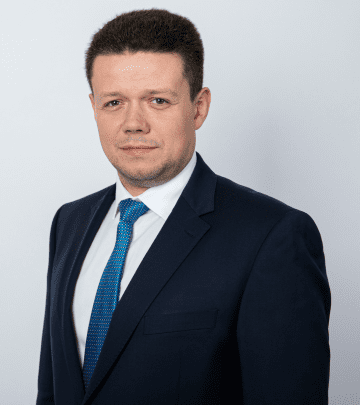Strategic investments in Baltic Sea area – the Polish perspective

Piotr Rychlik,
Ambassador of Poland to Finland
Recent years have shown new dynamics in large scale investments at the Polish Baltic Sea coast. Some of the projects aim at strengthening the energy security i.e. increasing the number of channels through which energy sources are transported to Poland and its partners as well as constructing modern facilities that produce renewable, clean energy. Others are oriented at creating new possibilities in trade and transport sector. Below you may find short overview of selected investments that are currently in progress or have been lately concluded.
LNG Terminals
In 2006 the Polish Council of Ministers decided to build Liquefied Natural Gas Terminal in Świnoujście (western end of the Polish coast) that would open the Polish and Central European market for gas transported by sea even from very distant providers. The Terminal named after the late Polish President, Prof. Lech Kaczyński was launched in 2016. Currently, the annual regasification capacity of the plant amounts to 5 billion m3. Moreover, there are two cryogenic tanks for LNG process storage located at the Terminal. Their combined capacity is 320000 m3. Construction of the terminal was a commercial success as its capacity in 2020 will be fully used. Therefore, there is a merit in its further development. From the geopolitical perspective, the LNG Terminal contributes significantly to diversification of natural gas import and enhances both energy security and predictability of supplies.
Regarding the plans for the future, another LNG Terminal at the Polish coast is considered: Floating Storage and Regasification Unit (FSRU) may be constructed in the Gulf of Gdansk in the next 6-7 years.
Baltic Pipe
The goal of the project is to create an alternative natural gas supply for the Cental European countries.. The pipeline will be constructed in 2022. It will allow transport of gas from Norway to Poland and Denmark as well as to clients in neighboring states. Baltic Pipe consists of 5 main components in the North Sea, Denmark, Baltic Sea and Poland. It is being constructed by two companies: Danish Energinet and Polish Gaz-System. The key component, is the offshore part in the Baltic Sea spanning 275 km that will pass through marine areas of Denmark, Sweden and Poland.
Among the main objectives of the Baltic Pipe are increasing competitiveness in the gas market and enhancing security of gas supplies. The capacity of the pipeline amounts to 10 billion m3 per year.
Crosscut through the Vistula Spit
Vistula Spit is the strip of land in the eastern part of Polish coast. It separates Vistula Bay from the Baltic Sea. There is a border between Poland and Russia in the spit which complicates or even makes shipping from the Polish Port of Elbląg impossible. The length of the channel will be approximately 1 km long and its depth will be 5 meters. The investment should be completed in 2022.
Deepening and widening of the Świnoujście-Szczecin fairway
The project will have significant importance for the development of the Port of Szczecin. It will improve the access to the Port for larger ships. The investment will be undertaken along the 62-kilometer fairway where technical depth will be increased to 12,5 metres. Together with doubling the reloading capacity of the Port, it will have a major impact for the entire region. The investment will be completed in 2022.
Offshore wind energy
Another major project is offshore wind energy development. The Polish government is committed to expand installed renewable energy generating capacity by approximately 30 GW by 2040. Because of favorable conditions for wind generation in the Polish Exclusive Economic Zone i.e. shallow waters and stable wind of an average speed of 8.5 – 9.0 meters per second, offshore wind power is one of pivotal sectors for national plans to greener electricity output. In the first phase, the offshore wind energy is expected to add 5.9 GW to the domestic network by 2030. The offshore wind projects will be able to apply for fixed-price contracts for difference for a period of 25-year which will enable their investors to secure funding and create business plans. An important angle of offshore wind development is regional cooperation between Baltic Sea states. Their representatives plan to sign the Baltic Sea Offshore Wind Declaration which emphasizes the role of offshore wind in an European strive for carbon neutrality.
The Baltic Sea was always important for Poland in geopolitical, ecological and also economical terms. The above mentioned list of projects and initiatives is not an exhaustive one. One could supplement it with for example the ongoing development of ports or the transportation system’s upgrade. However it is enough to prove that the region is on the verge of a change and Poland is determined to sustainably utilize its potential in full.
Expert article 2755
